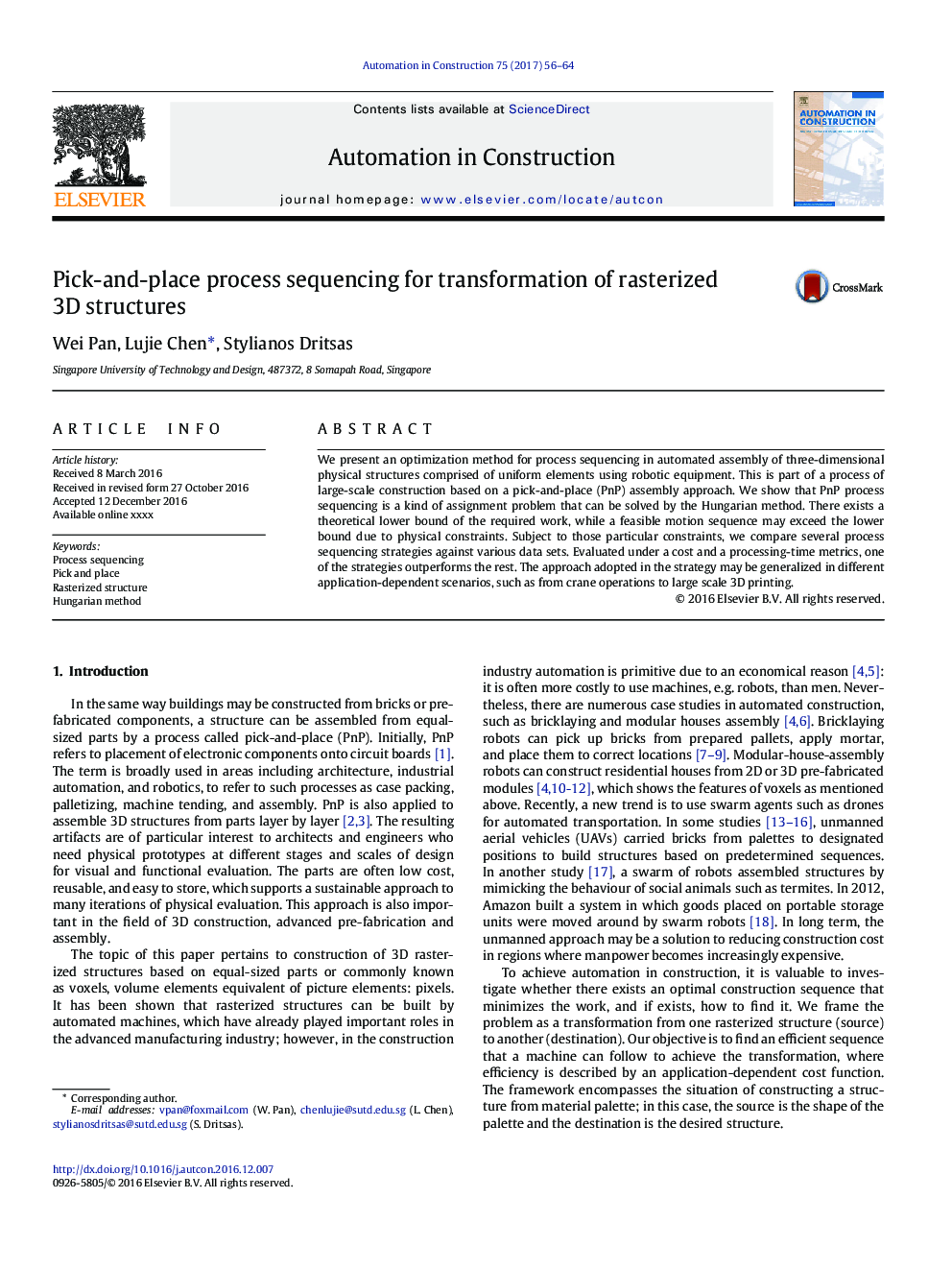| Article ID | Journal | Published Year | Pages | File Type |
|---|---|---|---|---|
| 4911375 | Automation in Construction | 2017 | 9 Pages |
Abstract
We present an optimization method for process sequencing in automated assembly of three-dimensional physical structures comprised of uniform elements using robotic equipment. This is part of a process of large-scale construction based on a pick-and-place (PnP) assembly approach. We show that PnP process sequencing is a kind of assignment problem that can be solved by the Hungarian method. There exists a theoretical lower bound of the required work, while a feasible motion sequence may exceed the lower bound due to physical constraints. Subject to those particular constraints, we compare several process sequencing strategies against various data sets. Evaluated under a cost and a processing-time metrics, one of the strategies outperforms the rest. The approach adopted in the strategy may be generalized in different application-dependent scenarios, such as from crane operations to large scale 3D printing.
Keywords
Related Topics
Physical Sciences and Engineering
Engineering
Civil and Structural Engineering
Authors
Wei Pan, Lujie Chen, Stylianos Dritsas,
